-

ERWIN BLUMENFELD: through the eyes of his son Henry.
-On the second day of the fashion and photography festival in Hyeres, I watched Henry Blumenfeld, elementary particle physicist and son of Erwin Blumenfeld, inconspicuously walking through the exhibit of his father’s work at the Villa Noailles. He was wearing a tan suit, sneakers and a baseball cap that was slightly crooked on his head. Before long, the spacious, bright room where the artist’s photographs and videos were being exhibited became empty and quiet. Only the slight hum of voices around the villa could be heard through the walls. Here, surrounded by a collection of stunning and rare examples of his father’s work — large-scale, restored prints — Henry sat down with us for an intimate conversation: Erwin Blumenfeld the artist, the father, the mentor and the man of perseverance.
by Lynsey Peisinger, Photography René Habermacher
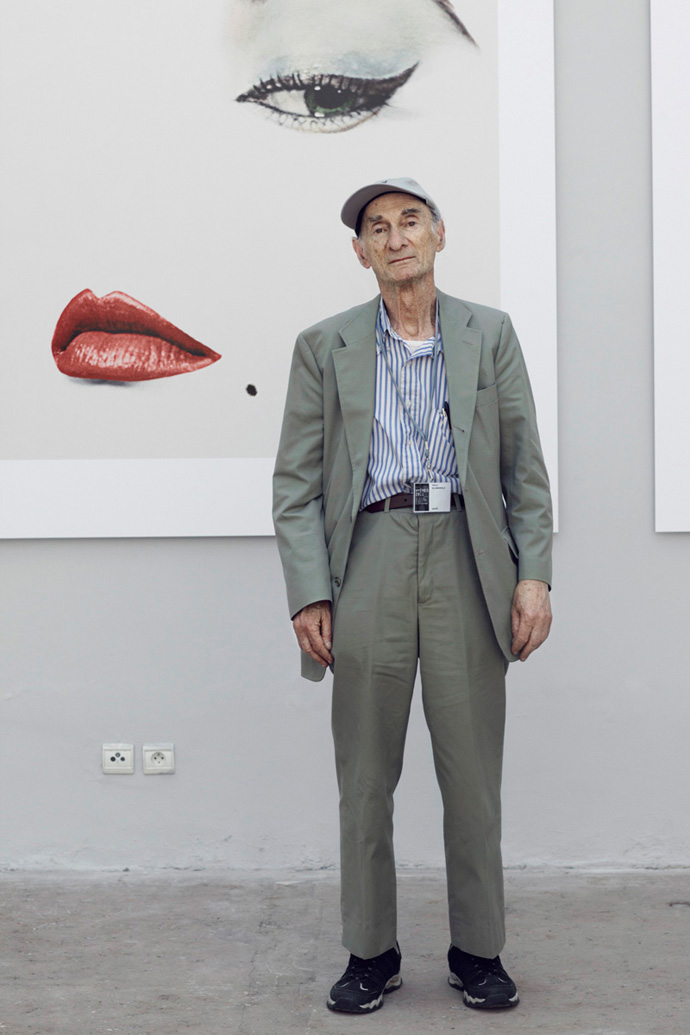 Son Henry Blumenfeld in front of his fathers DOE EYE with Jean Patchett for Vogue US 1950
Son Henry Blumenfeld in front of his fathers DOE EYE with Jean Patchett for Vogue US 1950LYNSEY PEISINGER: Where were you born?
HENRY BLUMENFELD: I was born in 1925 in Zandfoort near Amsterdam. My father had been an ambulance driver during the first World War. During the war, he had met my mother who was Dutch, Lena Citroen, who was a cousin of Pal Citroen, a German/Dutch artist. He grew up in Berlin with my father and they went to school together and they were very close friends. Through Pal, he met my mother and they corresponded during the war. My mother came to visit him in Germany when he was a soldier there. He tried to leave Germany, but he couldn’t. So, just after the war he came to Holland and then, a little bit later, married my mother in the early 20s. I guess, 1921. And because he was German and she was Dutch, she became German — that was the Dutch law at the time. I was born in Holland, but because I had a German father, I also became German.
LP: What was your father doing at that time?
HB: He was surviving. Leaving Germany at the end of the war, he tried to survive with the help of my mother and set up some kind of art dealing business with a friend, but that didn’t work very well. He was doing a lot of collage and kept in touch with other German Dadaists. After two years, he started to work as a clerk in a department store. Later, around the time I was born, he opened his own shop called the Fox Leather Company, selling ladies handbags and suitcases on the Kalvestraat. That went fairly well, but soon Hitler came to power and the business went badly and eventually bankrupt. That’s when he decided to become a photographer in 1934.
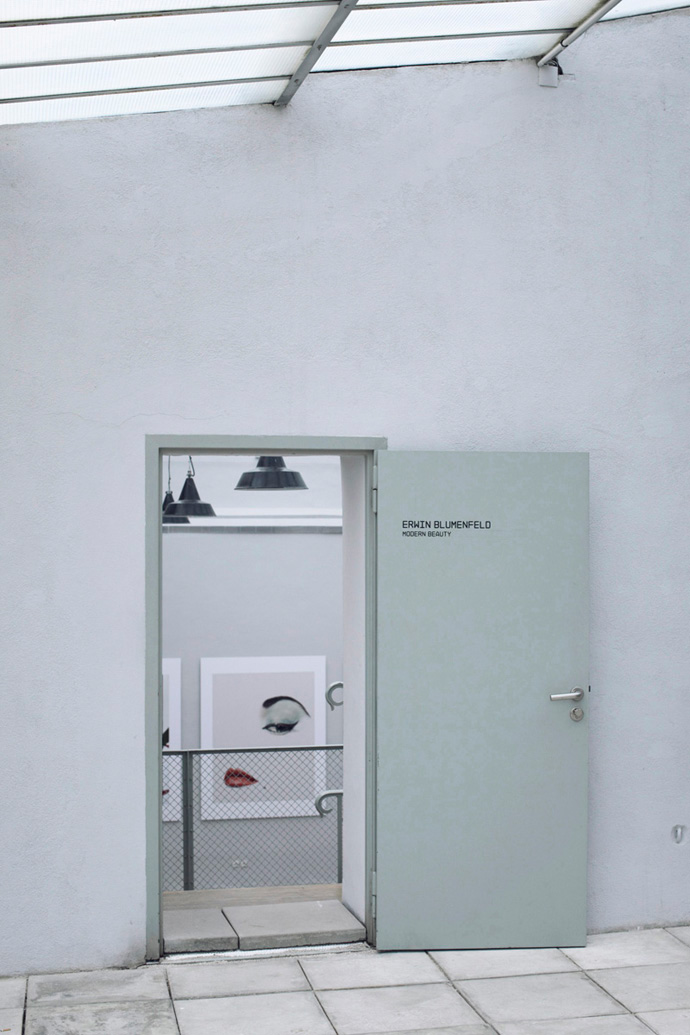
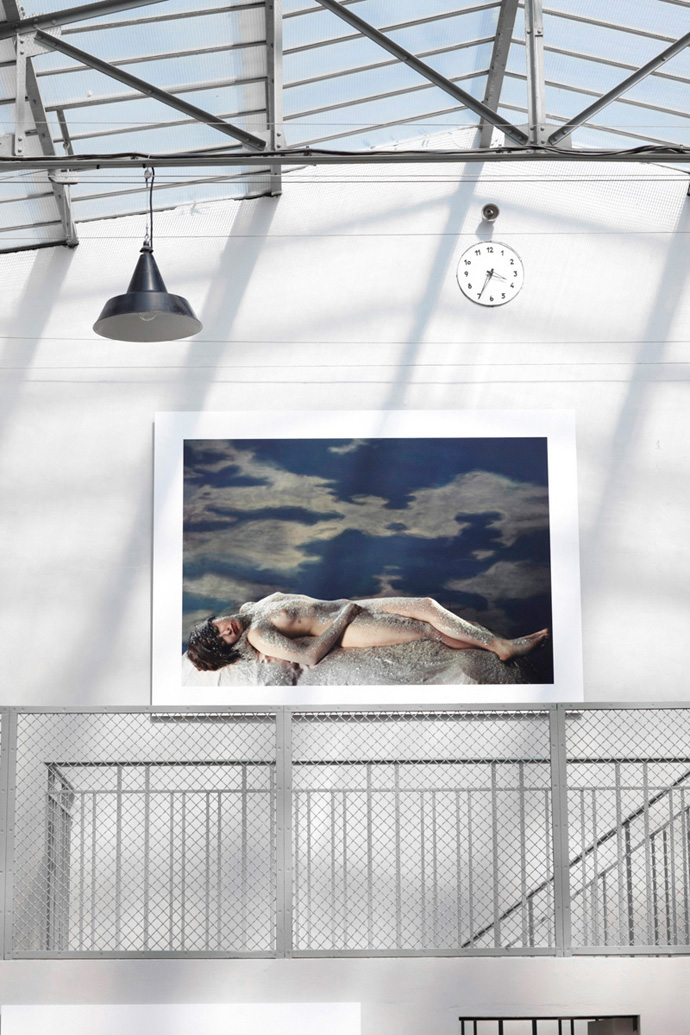 ERWIN BLUMENFELD Exhibition at the villa Noailles Squash Court. Right: Erwin Blumenfeld OPHELIA 1947
ERWIN BLUMENFELD Exhibition at the villa Noailles Squash Court. Right: Erwin Blumenfeld OPHELIA 1947RENE HABERMACHER: So your father’s first art oriented interest was collage and he was in the Dadaist movement?
HB: He was already interested in photography. He got his first camera when he was about 6 or 7. But his main interest was perhaps the theatre. That was something he was strongly attached to: the German language. His Dutch always remained a little bit feeble to say the least. He worked quite a lot, but with theatre in German language, he couldn’t make much of a living… With his collages he couldn’t make a living with that either but always kept in touch with the Germans — Grosz and Richard Huelsenbeck and other people of the Dadaist movement. Recently there was an exhibition in Berlin on this periods work of my father and a book has been published.
LP: Did he continue to do collage later on when he started doing photography?
HB: No. When he was doing collage, he was also painting — he was a Sunday painter: He did quite a bit of painting on Saturdays and Sundays. But he dropped doing his collage and the painting and started doing photography in Amsterdam. The business went rather poorly, he had health problems and more or less escaped to Paris around the 1st of January 1936. The first year it was very difficult for him to make a living. He got support from the family of his wife, of my mother. On his side he didn’t have much family left. His father had died before the first world war and his mother deceased shortly afterwards. He lost his brother in the war as a soldier in the German army and his sister died of Tuberculosis shortly after.
My father was friends with Walter Feilchenfeldt’s wife Marianne. He was a quite well known art dealer in Zurich. Mariane Feilchenfeldt helped him to rent his studio in Paris at 9 rue Delambre.
RH: So in Paris he got introduced to photography on a professional level?
HB: Already in Holland he was doing it on a professional level. He took many portraits and pictures there, but they didn’t sell much. He got in touch with some French people who came to Holland and they eventually supported him when he went to Paris — like Andre Girard the painter. Then, after about a year later, he started to sell photos to small photo magazines in the US and England, such as Lilliput. In 1937, he met british photographer Cecil Beaton who introduced him to Vogue. My father started to work for Paris Vogue in 1938.
When he was in Paris, he worked only in black and white. Color was not yet really developed for photography. It was very difficult for individuals to use color in their own studios, so he only did black and white while he was in Paris. I should mention that for his Paris period, his publications in Verve were very important. He had some of his striking black and white photos published in the first issues of that magazine. In the dark room, he experimented a lot, but only in black and white.
Then came the war and during the war, we were foreigners in france — we were not really refugees, but were without status, so it was quite difficult. In the beginning of the war, we were more or less exiled, we lived in a hotel in Vessely nine months, a sort of medieval town in Burgundy, France with a really nice cathedral. Then the Germans came and my father and sister were put in a camp. My mother and my brother and I, with the help of some Citroen cousins, managed to escape to the south of France. Our father was then in a rather horrible camp in France. We stayed in the Country until 1941, trying to get out. Then we managed to get a visa for the US — my father had been to the US already, in June of 1939. That was were, I think he took his first color photographs. He came back to France in July 1939 and he was stuck in France for two years. Then when we got to go to the US, he started working first with Harper’s Bazaar for two or three years, switched to Vogue and started doing color photography. At the time, he took his color pictures in the studio, using different color lights and so on — he was very experimental. But for the development and the printing, it was completely out of his hands. It was always done by Kodak. At the time, he couldn’t do anything in color on his own in the laboratory.
Most of these photos here were printed by Kodak. When I say printed, they weren’t really printed, they were large color transparencies. Like big negatives — 12 by 15 inches. I think that all of these photos here were taken in this large format and they were transparencies. The pictures were only printed for Vogue — working from the transparencies. Sometimes my father would give some direction on how they should be printed, but he was not generally involved in the printing itself. Only later, around 1956, they started to develop a new process called C-Prints. He bought the C-Print machine and he could start doing his own color. But C-Prints were very unstable as far as the color went — if they were exposed to light, in a few days they would essentially vanish. So all of his work in C-Print is essentially gone. Even the color transparencies that we have of his work have either faded or changed color a lot. Especially the reds, had faded. So, our doughtier Nadia has worked a lot with Olivier Berg at a laboratory in Lozère to try to restore the original colors. She is using the original publications because those prints have kept their color much better than the transparencies. So what you see in this exhibit is the result of the work that Olivier Berg and Nadia have done.
RH: Would you say that your father was somebody who was very progressive and pushing for new things in general?
HB: I don’t know about new things…. He was for the experimental, which is a little bit different. I don’t know if he was really striving for new things, but he tried to do do things differently and experimented. He was very much inspired by especially old painters like Goya and Renoir and much impressed by Picasso. I don’t know if he ever got to meet Picasso in Paris at the time. But he met quite a few artists as Dali and others.
 Erwin Blumenfeld advertising for PALL MALL circa 1957.
Erwin Blumenfeld advertising for PALL MALL circa 1957.RH: But he liked the experimental, so maybe that was something that remained with him from the Dadaist movement?
HB: Yes, that was important to him.
LP: I heard Michel Mallard talking earlier about how remarkable it is that there was no photoshop or digital editing at that time… this image, this one with the lips and the eye, DOE EYE, where the nose is missing and there is color separation, was this done in the retouching process?
HB: This was done in the process of retouching. It was an original black and white picture. It was colored afterwards by my father and by Vogue. They worked on it together. That was a special case because the others that you see were done in color and then reworked. This one did not originally have these colors.
RH: When your father was working, did you often witness his process and how he worked in his studio?
HB: No. When he was in Paris, working in black and white, I was somewhat present. But afterwards, in the States, I was not really present anymore. So I didn’t really witness him working in color.
RH: Was his approach as a photographer more controlled or more spontaneous?
HB: I think both. He was quite controlled — all of these pictures here were taken in a studio. But he also traveled quite a bit in America and in Europe and he took many 35 millimeter color slides. Incidentally, the color of those slides kept much better than the color on the transparencies. But, in the studio, he was very controlled and would take many pictures to get something specific in a sitting.
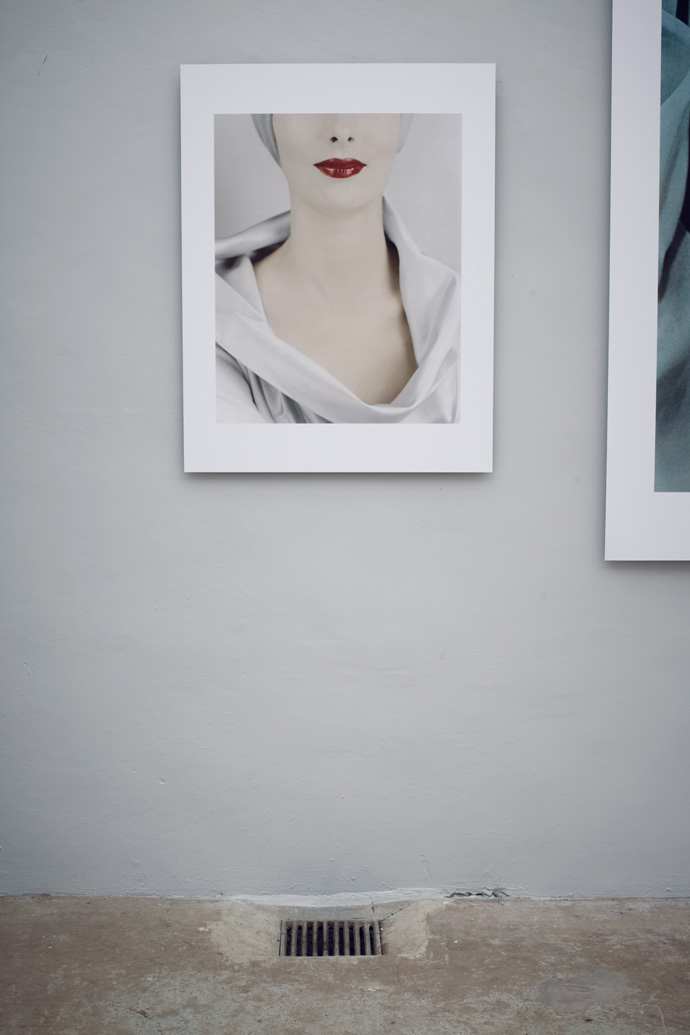
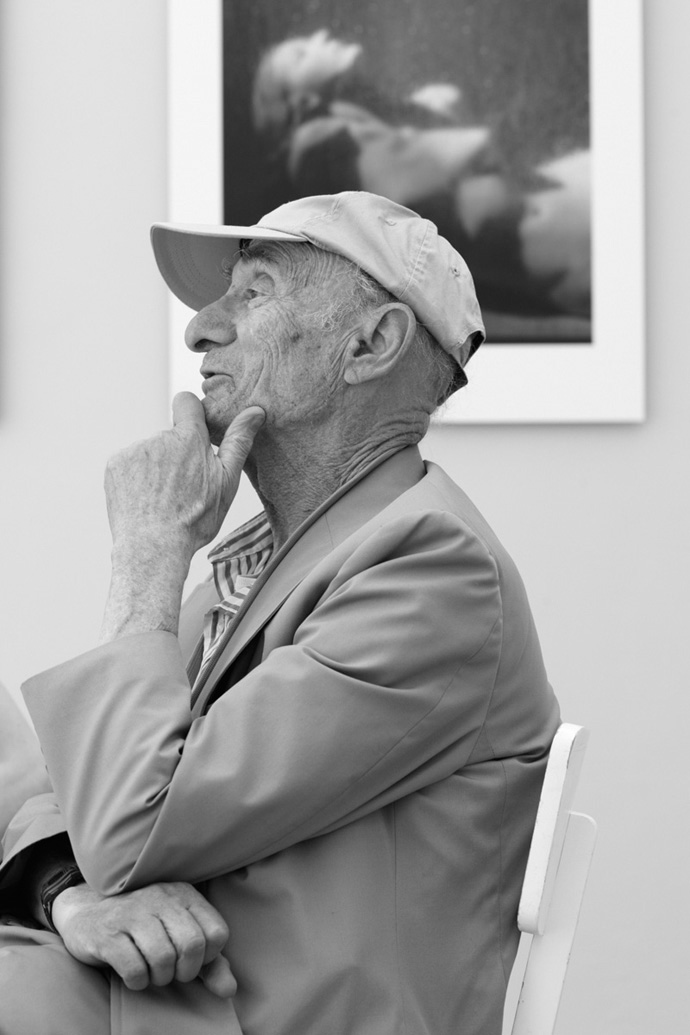 Left: Erwin Blumenfeld LE DECOLLETE 1952, RIGHT: Henry Blumenfeld in Conversation
Left: Erwin Blumenfeld LE DECOLLETE 1952, RIGHT: Henry Blumenfeld in ConversationLP: In Paris, were you present when he would shoot people in the studio?
HB: Sometimes, but not very often. I was more present when he was working in the dark room.
RH: I recently saw notes from Richard Avedon where he had a black and white print and he marked on it all of the places where he wanted the development to be darker or lighter using manipulation techniques in the dark room. Was your father working with these techniques too?
HB: Yes in the dark room, for black and white, he manipulated a lot. It would have been interesting to see what he would have done with color photography if he had been born fifty years later. At the time, the technology wasn’t there for him to do anything after a picture was taken in color.
RH: Where would your father have his intellectual and creative relationships — in other photography or painting etc?
HB: I would think painting. Very much painting, classical painting. Many of his photos were inspired by different painters. He was also inspired by modern life and by life in NY at the time, in the 40s and 50s. He liked jazz music very much, in the New Orleans style.
And he was quite interested in looking at television when it first came out. We got our first television set around 1950 or so. It was black and white at the time. I don’t think he ever saw color television. Maybe he saw it, but he never had one. He liked movies — but more for the content than for the photography. He liked Nanook of the North, about a Danish explorer. He was interested in movies — liked Erich Von Stroheim and he liked Sunset Boulevard and Billy WIlder.
RH: Was that love for cinema also what led to him making films?
HB: The filming was more in line with advertising. I think he was trying to see if he could use the filming for advertising, rather than to tell a story like in movies. Now you see everything mixed, advertising and movies. But at the time, it was an experiment.
RH: Do you think that your father really divided the things that he did for himself and the things that he was commissioned to do? The time after the war was quite commercial driven in America — was it easy for him to also do what he wanted to do?
HB: For one thing, the black and white and the color were two different things. In black and white, he could do what he wanted. In color, probably none of them were published in the exact way that they had been taken. They were made and developed specifically for Vogue. He did appreciate the possibility to work in color, but the whole fashion business and the way it worked was not very attractive for him. But still, when he had started out in Germany, he had started out working for a textile company and so, even then, he was interested in materials and fashion. Still, he didn’t really appreciate the fashion magazine business, but he knew that he could make his living there. So there were two sides to it for him — on one side, it was a place for him to make a living, on the other side, it gave him the opportunity to work in color, which he might not have had otherwise. He did have certain resentments, which is true for everyone in any job.
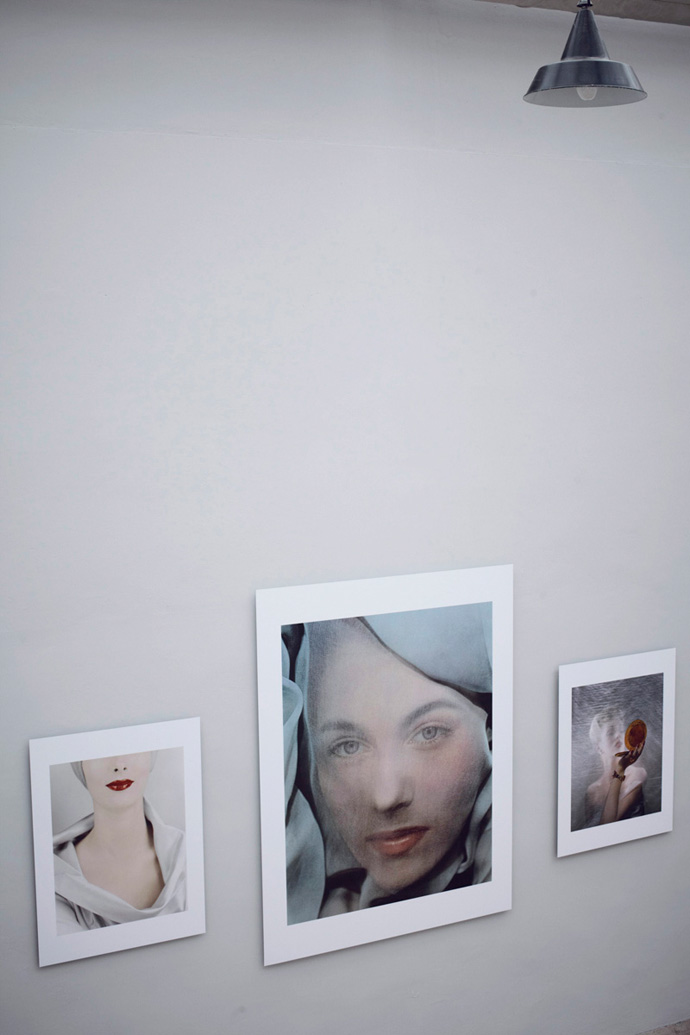 Erwin Blumenfeld DECOLLETEE and BLUE both 1952, and POWDER BOX 1944
Erwin Blumenfeld DECOLLETEE and BLUE both 1952, and POWDER BOX 1944RH: There are artists who suffer between the economical need to do something commercial and the desire to make the work that they are passionate about. They can feel torn…
HB: I don’t think that was his case. First of all, he did well financially in the 40s and 50s and he appreciated that. And then, because of that he was able to continue his work in black and white. You might have seen his book “My One Hundred Best Photos”. We have people comment on the fact that there is almost no fashion in that book–he did a little fashion photography in black and white for Vogue before the war, but later he didn’t do any fashion work in black and white. But, it gave him a lot of satisfaction to be able to do that book of his black and white work.
Still…he wasn’t always satisfied with everything. Becoming old for him was very difficult. It made him suffer a lot…some people accept it, but he accepted it quite badly.
LP: You said that he was experimental as a photographer. As a person and as a father, did he also have that type of attitude? And did he transmit that type of approach to his children?
HB: Well….I think he had his ups and downs. He was a very active father in many ways. He was involved with his children and either pleased or displeased with what they were doing. I don’t know….the children turned out very differently. I became an elementary particle physicist. My brother became a writer. He is not exactly politically minded… he is interested in art, sociology in many ways and in the way people behave. He was very rich in ideas my father, perhaps more so than his children.
LP: Did any of his children take an interest in photography?
HB: Interest yes, but not active in photography. Though, my wife became a photographer. She was born in Paris to an Algerian/Russian father and a British aristocratic mother. She survived the war in France — her father was Jewish, her mother was British, but anyway they would have liked to capture her. After the war she came to New York and worked for one year for the New York Times, one of the first women to work in a non-secretary position at the New York Times. Then she went back to France and when she came back to the States, the New York Times fired her because her vacation to France was more vacation than they were willing to give. Then she met the wife of Alex Liberman, the editor of Vogue, and became model editor at Vogue. Her job was to provide models for the photographers. Then she met my father and after a fews years, she started working for him. She started representing him. She never got any lessons from him in photography but she worked with him as an assistant– sending his photographs to different commercial companies. Then after we got married, she became a photographer herself and worked quite actively as a photographer. First a bit in Princeton where we lived. Then in Geneva for a few years. Then we came to Paris and she started working for Vogue and other magazines. She did mostly portraits of personalities and important political people and scientists etc. And other side projects, like children photography too. To a large extent inspired by my father. Of course, after we got married and had children, my father got another assistant, Marina Schinz. She became a photographer too — mostly garden photography and published a book on that.
LP: It is interesting that she worked with your father, who was doing a lot of fashion photography and then she became a garden photographer…
HB: She admired his work very much and when he died, she bought his studio on Central Park South. And she didn’t have a single photograph of his on the wall.
Both she and Kathleen, my wife, probably wouldn’t have become photographers without him. They were inspired by him, but they probably felt that they couldn’t really rival him, so they chose different styles.
LP: Do you think that he was a good teacher?
HB: He wasn’t really a teacher. But he was a big influence. My wife saw how he worked, but he never tried to give her lessons. Same with Marina Schinz.
When my father died, he let Marina handle his photographic inheritance. From the point of view of his will, it was never very clear…He left the photos with her and she tried to handle it the best possible way. So she divided all of the black and white photographs into four lots–one for each of his children and one for herself. Then she gave essentially all of the color transparencies to Nadia. Now Nadia has been quite active in promoting her grandfather’s work. She is now working on an exhibit for next year in Chalands sur Seine. There is a photography museum there and next year they will do an exhibit of my father’s work.
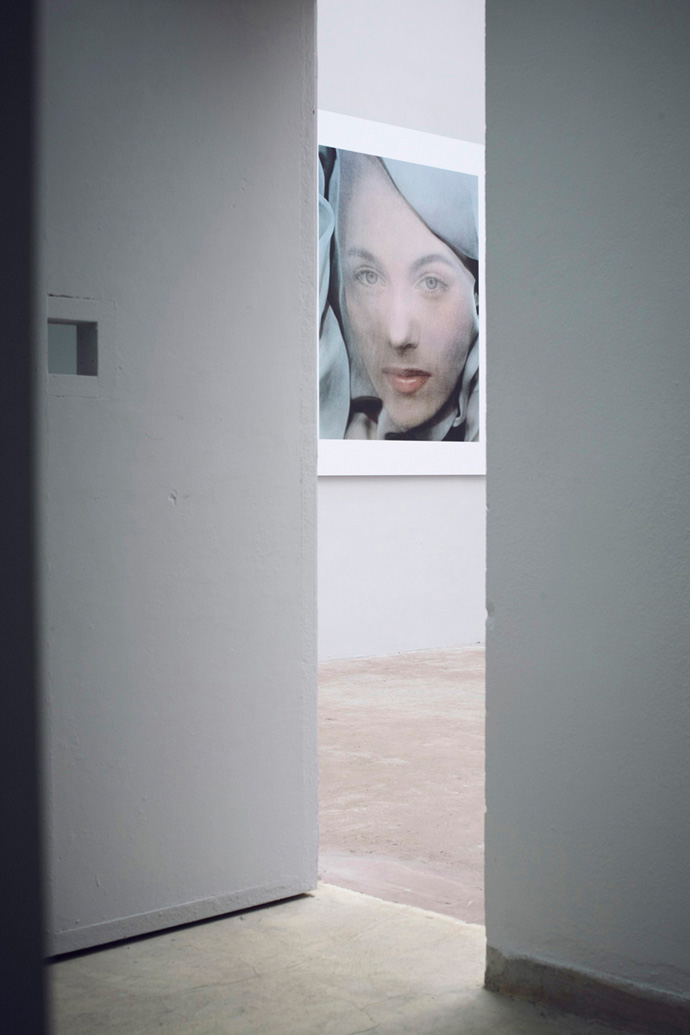
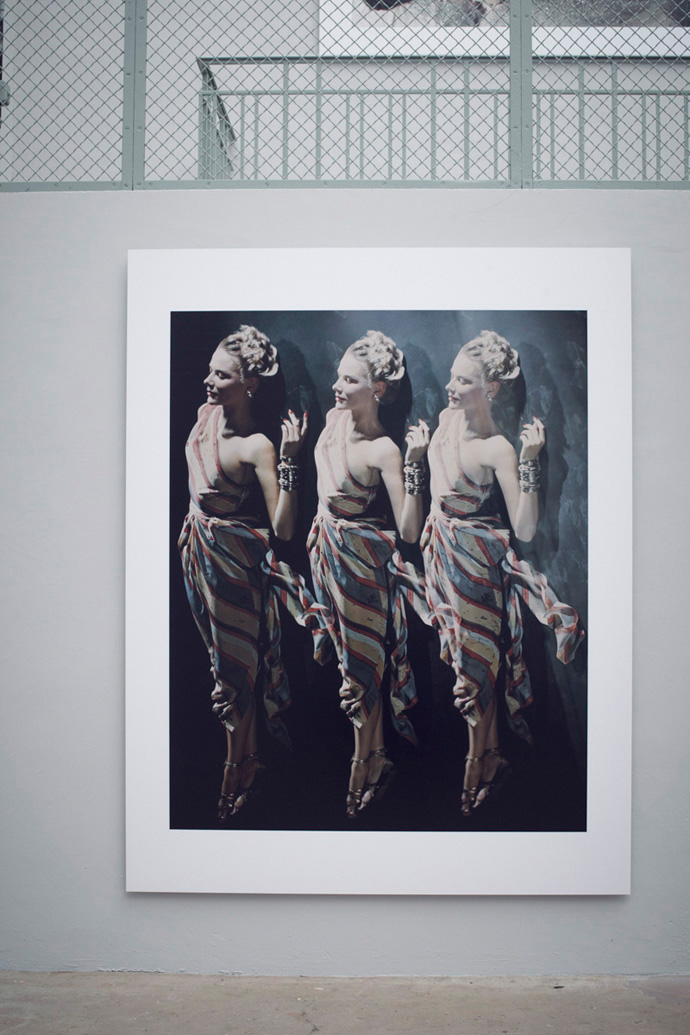 Left: Erwin Blumenfeld BLUE with model Leslie Redgate 1952. Right: Erwin Blumenfeld VARIATIONS, unpublished 1947
Left: Erwin Blumenfeld BLUE with model Leslie Redgate 1952. Right: Erwin Blumenfeld VARIATIONS, unpublished 1947LP: What is the last thing that stimulated you?
HB: What do you mean by stimulated? Something that affected me? Well, the thing that affected me is that my wife, Kathleen, died three months ago. Clearly that affected me. She had been sick, her brain didn’t work anymore. She was going downhill for ten years and in the last two years, she didn’t talk anymore. I don’t know what went on in her head. And three months ago, on the 9th of February, she died next to me…That is the thing that affected me. Also, what affected me was, she died very peacefully next to me. I didn’t realize that she was dead until I felt her and she was still warm and the kin came and said “votre femme est morte”. The morning afterwards, I got the announcement that a second great grandchild had been born. That also affected me. The day afterwards was the funeral and that was quite a moving event–we had five of the grandchildren and they made speeches and my children made speeches and I made a speech. One of the granddaughters filmed it and I now have it on dvd. So, that too affected me. I could tell you more, but maybe that’s enough for the moment.
Kathleen had been very close to my father and she admired him very much. Over the last ten years, she slowly went out of this world.
Thanks to our daughter Nadia, Kathleen had two double page spreads in Match in the last year. Nadia had given the pictures of Kathleen to Roger Viollet and he organized the spread.
RH: What is your work?
HB: I am an elementary particle physicist, experimental! Which is quite different. But I worked first with Cloud Chambers and then with Bubble Chambers and so I surely took more pictures than my father did. Of particles. Millions of pictures.
10 -

Hyères Alive ! Fashion Shows & Awards Ceremony
-Semi-live from Hyères, it’s Hyères Alive !
Hyères 2011 Fashion Shows.
Hyères 2011 Award Ceremony.
Directed by Antoine Asseraf
Filmed by Antoine Asseraf + Jason Last
Edited and post-produced by Clément Roncier
Voice and coordination by Lynsey Peisinger
Sound Design by Lori Schonberg